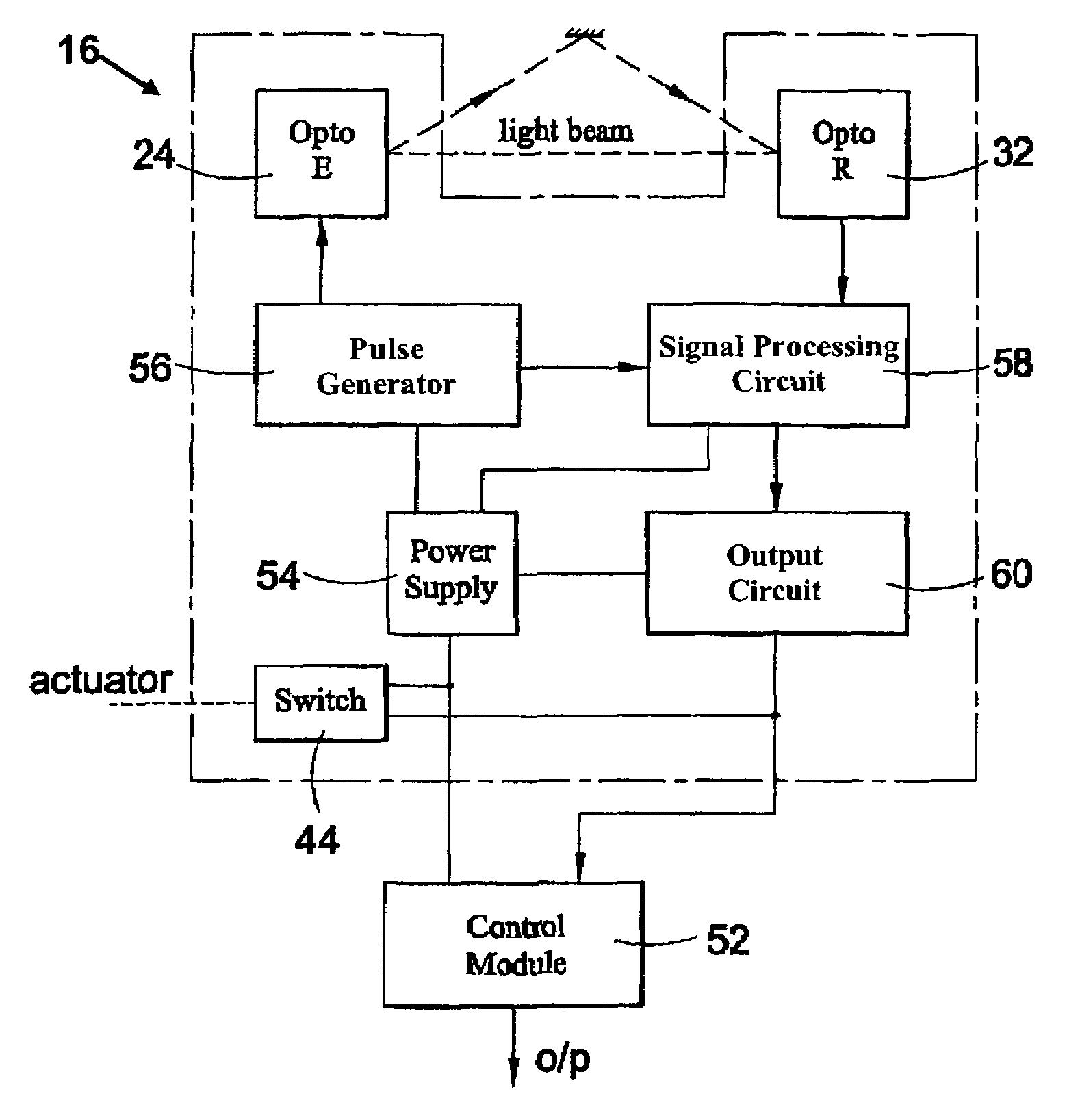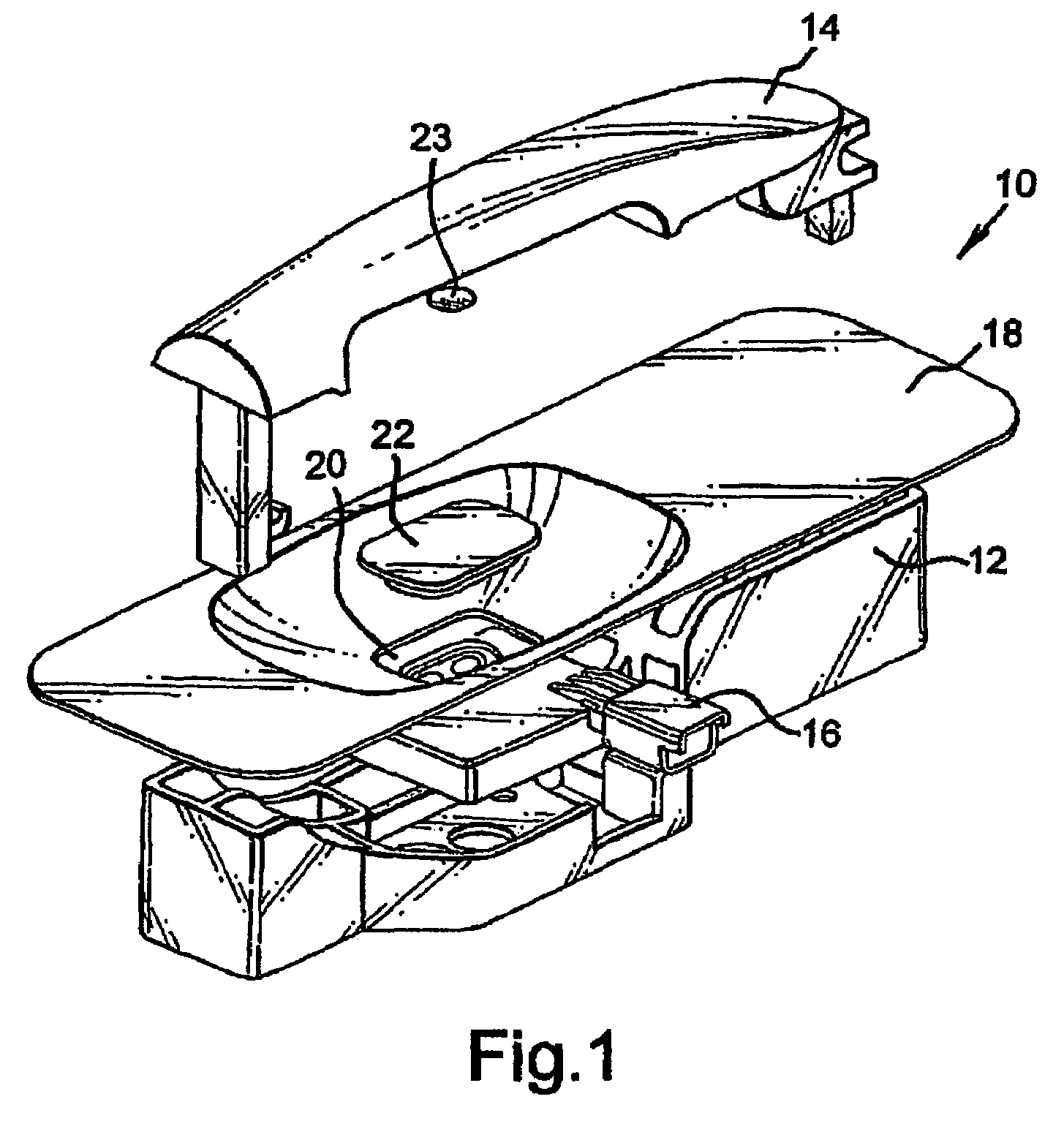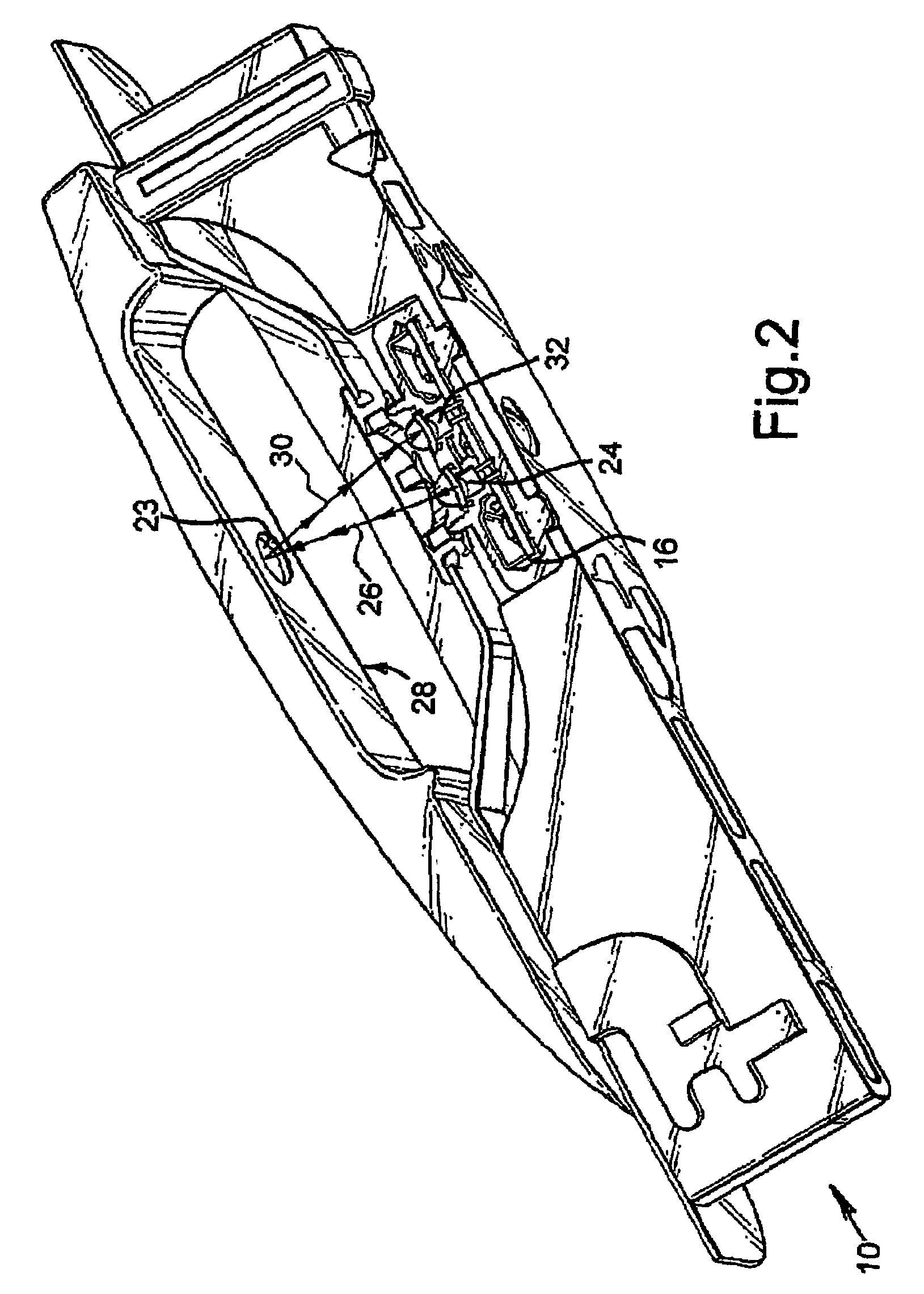Keyless access sensor system
- Summary
- Abstract
- Description
- Claims
- Application Information
AI Technical Summary
Benefits of technology
Problems solved by technology
Method used
Image
Examples
Embodiment Construction
[0027]According to one aspect of the present invention, there is provided a sensor system for use with a keyless access control system, the sensor system comprising:
[0028]an electromagnetic radiation generating element for generating an incident beam of electromagnetic radiation in the form of a pulse train;
[0029]an electromagnetic sensing element for sensing the incident beam, and
[0030]a signal processor coupled to the sensing element for detecting an interruption to, or modification of, the incident beam, the signal processor including a timer for detecting when the duration of the interruption or modification of the incident beam is greater than a predetermined by detecting the presence of absence of a predetermined number of pulses varying from a predetermined level, the signal processor for providing an output signal to an access control mechanism when the presence of absence of a predetermined number of pulses are counted.
[0031]Preferably, the system includes a backup switch f...
PUM
 Login to View More
Login to View More Abstract
Description
Claims
Application Information
 Login to View More
Login to View More - Generate Ideas
- Intellectual Property
- Life Sciences
- Materials
- Tech Scout
- Unparalleled Data Quality
- Higher Quality Content
- 60% Fewer Hallucinations
Browse by: Latest US Patents, China's latest patents, Technical Efficacy Thesaurus, Application Domain, Technology Topic, Popular Technical Reports.
© 2025 PatSnap. All rights reserved.Legal|Privacy policy|Modern Slavery Act Transparency Statement|Sitemap|About US| Contact US: help@patsnap.com



